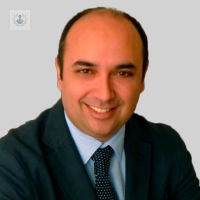4 keys on temporomandibular joint dysfunction
Written by:
What are temporomandibular joint disorders?
Disorders of the temporomandibular joint are a set of diseases that mainly affect the articulation of the mandible, the temporomandibular joint, the mandibular musculature and the structures attached to both. Inside, properly of the affections of the temporomandibular joint, we would have three fundamental groups of pathologies. First, inflammatory-painful pictures. Second, degenerative pictures such as osteoarthritis or osteoarthritis. And, thirdly, the so-called alterations of the condyle disc complex. Within this third group we would have two fundamental pathologies that would be the disc displacement with reduction and the disc displacement without reduction.
What are the symptoms?
The three fundamental symptoms of temporomandibular disorders are, first, pain, which is usually located in the temporomandibular joint itself, although in some cases this pain may be reflected to other structures of the head, such as inside the ear. Second, there are articular noises that can be of different types and that happen during the opening and closing movements of the mouth. And, thirdly, alterations in mandibular mobility. Within this third group, we would have two large groups of pathologies: those that cause a progressive or abrupt reduction of the opening of the mouth, and those that cause excessive movement, causing in many occasions the patient is left with the mouth open.
What is its cause?
Disorders of the temporomandibular joint generally have a multifactorial etiology. There are different causes that can cause these disorders, such as a poor fit of teeth, an alteration of occlusion, bruxism or tightening of the teeth at night, genetics, women suffer this type of pathologies with much more frequency than men, and psychoemotive stress. It has been shown that patients with prolonged stress, anxiety or depression can have this type of disorder more frequently.
What treatments do they offer at the Craniomandibular Institute?
Taking into account that the etiology of temporomandibular disorders is multifactorial, the treatment we always offer patients should be multimodal and multidisciplinary. In the Craniomandibular Institute, we have a wide range of treatments depending on the needs of the patient. Such as, for example, the making of intraoral devices such as discharge splints; temporomandibular joint physiotherapy; infiltrations both muscular and articular, in the latter case with the use of growth factors; temporomandibular joint surgery; the pharmacological treatment for the treatment of orofacial pain, which can be complemented with a drug-genetic analysis of the patient, and techniques for the control of the psychosocial stress of the patient within which we could include the psychotherapy proper and also, relaxation techniques such as biofeedback or diaphragmatic breathing.




